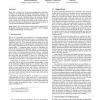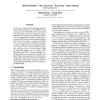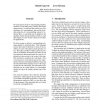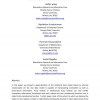108
click to vote
APVIS
2011
13 years 11 months ago
2011
Maps offer a familiar way to present geographic data (continents, countries), and additional information (topography, geology), can be displayed with the help of contours and heat...
PVLDB
2008
14 years 10 months ago
2008
We present SEMANDAQ, a prototype system for improving the quality of relational data. Based on the recently proposed conditional functional dependencies (CFDs), it detects and rep...
103
click to vote
VLDB
2002
ACM
14 years 10 months ago
2002
ACM
We present a framework for publishing relational data in XML with respect to a fixed DTD. In data exchange on the Web, XML views of relational data are typically required to confo...
129
click to vote
VLDB
2002
ACM
14 years 10 months ago
2002
ACM
We enunciate the need for watermarking database relations to deter their piracy, identify the unique characteristics of relational data which pose new challenges for watermarking,...
TVCG
2008
14 years 11 months ago
2008
Databases often contain uncertain and imprecise references to real-world entities. Entity resolution, which is the process of reconciling multiple references to underlying real-wor...
CORR
2007
Springer
14 years 11 months ago
2007
Springer
In this paper, we present a generalization of the relational data model based on interval neutrosophic set [1]. Our data model is capable of manipulating incomplete as well as inc...
136
click to vote
IDA
2008
Springer
14 years 11 months ago
2008
Springer
Currently statistical and artificial neural network methods dominate in data mining applications. Alternative relational (symbolic) data mining methods have shown their effectivene...
CIDR
2009
15 years 9 days ago
2009
The challenge of managing unstructured data represents perhaps the largest data management opportunity for our community since managing relational data. And yet we are risking let...
107
click to vote
AVI
2004
15 years 18 days ago
2004
Visualization interfaces that offer multiple coordinated views on a particular set of data items are useful for navigating and exploring complex information spaces. In this paper ...
100
click to vote
SDM
2007
SIAM
15 years 18 days ago
2007
SIAM
We introduce a new approach for Clustering and Aggregating Relational Data (CARD). We assume that data is available in a relational form, where we only have information about the ...




